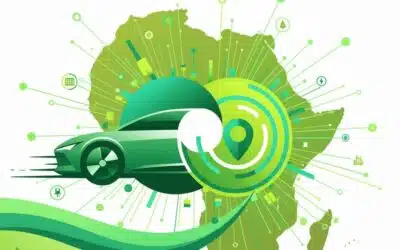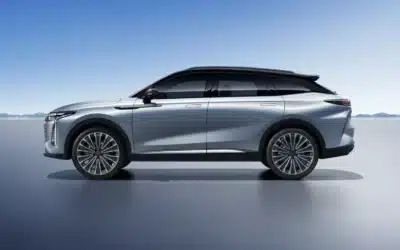
In all the discussions around electric vehicles, it’s easy to lose sight of one stunning but significant fact – we’re still in the nascent early days of the EV drivetrain.
Let’s use the analogy of the mobile phone. The original Motorola ‘brick phones’ from the mid-1980s weighed nearly a kilogram, took 10 hours to charge and you could only talk for about 30 minutes before it ran flat.
The iPhone 15 weighs less than a quarter of a kilo, is fully charged from dead in an hour and a half, and some tests have shown it’ll keep you chatting for around 25 hours straight. And then there’s the tremendous computing power you are carrying around, the instant access to all the information in the world, the ability to capture your lunch in pixel perfection and 4K video, as well as being able to stream the latest Deadpool movie.
Okay, so there have been 40 years intervening, but you get the gist. And don’t forget that the step-up in technological achievement is exponentially accelerated in the present day.
Lithium-Ion Batteries Will Get Better
Lithium-ion batteries currently dominate the EV market, but they are reliant on rare metals pulled from the earth through costly and damaging mining processes, weigh down our vehicles, can degrade over years, take considerable time to charge, employ flammable electrolytes and are prone to thermal runaway fires if damaged.
In 40 years, you can imagine engineers wondering why we ever used such primitive energy storage devices. Nonetheless, there have been improvements. In 2010 the energy density of lithium-ion batteries was about 150Wh/kg and it’s around double that now – which means more energy stored, equalling greater power and driving range.
We already have vehicles capable of 500km or more on a single charge, compared to barely 150km a decade ago, and charging times are generally down to around 30 minutes. Meanwhile, advancements in battery chemistry, structure and casing have made lithium-ion battery packs safer and more durable.
Additionally, silicon anodes are being developed to replace graphite anodes, as they boast a much greater capacity to store actual lithium ions, theoretically up to 10 times more!
There is no question that these batteries will see dramatic further improvements in short order over the next few months and years. However, in the race for battery efficiency, exciting new options are coming too!

Sodium is readily available across the world. Sodium-ion battery technology is emerging. It doesn’t use rare earth metals.
Sodium-Ion Batteries Boast Abundant Resource
Sodium is the seventh most abundant element on Earth – and cheaper! Sodium-ion batteries also don’t need cobalt or nickel (rare metals, the extraction of which raises ethical and environmental concerns).
Charging is quicker because sodium ions move more quickly through the electrolyte, and it is claimed that the batteries can be charged to 80% capacity in as little as 10-15 minutes. They’re also more thermally stable, reducing the risk of overheating and fires.
However, their energy density is lower than lithium-ion batteries which will make them heavier and bulkier when compared by stored energy, which potentially means lower driving range. The life cycle could also be reduced due to the anode materials such as hard carbon, degrading quicker.
Even so, continued R&D advancements will improve range and durability, and the first electric cars with sodium-ion batteries have already gone into production in China manufactured by Yiwei and JMEV.

A worker in QuantumScape’s lab. The company is pioneering solid state EV batteries.
Solid State of Affairs
Could solid-state batteries be the next big thing? The solid electrolyte instead of a liquid or gel, is non-flammable and reduces the risk of fire. The electrolyte itself can therefore be made from various materials such as ceramics and polymers.
As such the energy density can be two or three times higher, making the battery smaller and lighter and potentially offering driving ranges of over 1,000km on a single charge! They can also be charged much faster and last longer being less prone to the degradation suffered by lithium-ion batteries.
Sounds perfect, right? Well, the materials and manufacturing process is more complex and costly, and some solid electrolytes can perform poorly at low temperatures, which isn’t ideal on a cold wintery day. They’re also not available yet and are likely to be years rather than months away.
Having said that, several manufacturers are locked into a race to be the first to market. The Japanese in particular appear to be leading the charge on this one with Toyota, Honda and Nissan all promising the new battery tech by 2028 at the latest. Other companies include Ford, BMW and Volkswagen which has backed start-up QuantumScape to bring solid-state batteries to market.
It is possible we will start to see these new batteries as early as 2026 in some high-end luxury cars.
The Rest: From Magnesium to Graphene
Lithium-sulfur batteries use abundant sulfur, with good energy density, however, they have a shorter lifespan and polysulfide formation reduces efficiency over time.
Aluminium-ion uses aluminium as the anode. It’s not only the most abundant metal, but the batteries are less likely to overheat. Finding an electrolyte that works well with it is challenging.
Magnesium-ion batteries use magnesium as the anode, which has a double positive charge and can store more energy. The material is plentiful and safer to use, but again there is an issue with suitably compatible electrolytes.
Graphene batteries use a single layer of carbon atoms, arranged in a two-dimensional honeycomb lattice. It has exceptional conductivity for better charging speeds, but producing graphene is expensive and complex.
Batteries in coats
While the notion of batteries in coats might conjure up images of cells packed into puffer jackets, it actually refers to coatings of advanced materials applied to battery components. These are designed to enhance performance, longevity and safety.
In lithium-ion batteries, they can protect electrodes from degradation, while in sodium-ion batteries they could stabilise the electrode materials, enhance conductivity and improve thermal stability. Even applied to solid-state batteries they will enhance the interface between the solid electrolyte and electrodes and further improve energy density and safety.
While it might not be clear which of these emerging technologies will prevail, and indeed it could be more than one that drives EVs into the future, what is apparent is the pace of technological advancement with EV drivetrains. This also signifies massive improvements in durability, safety, charging times and driving ranges coming soon.











